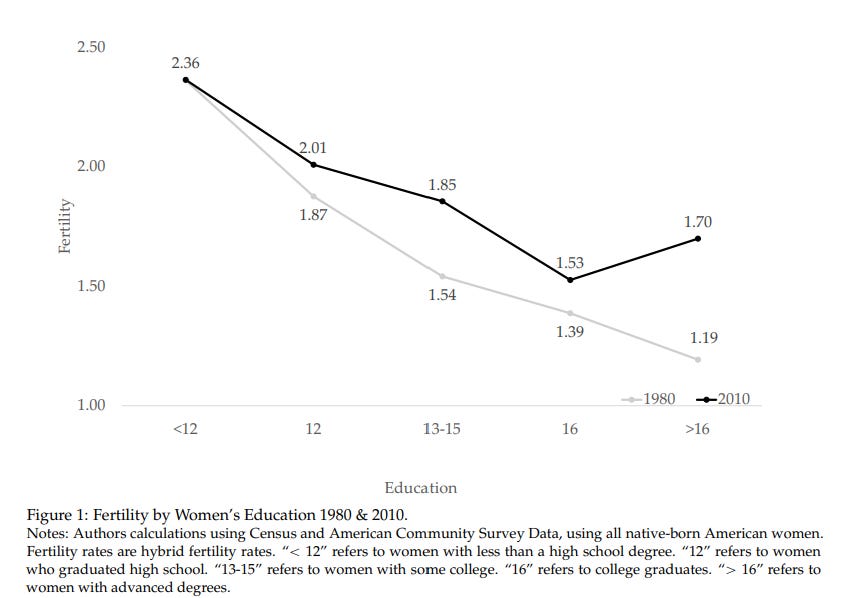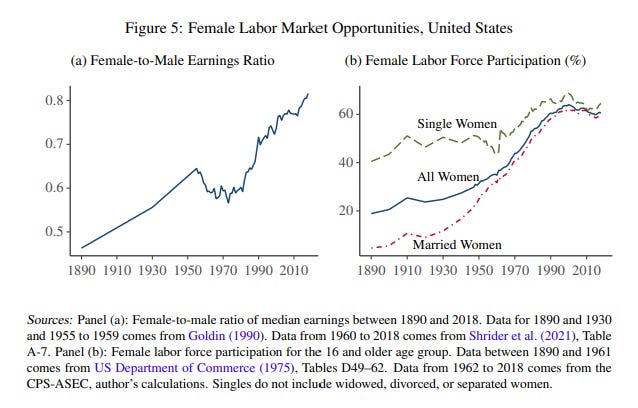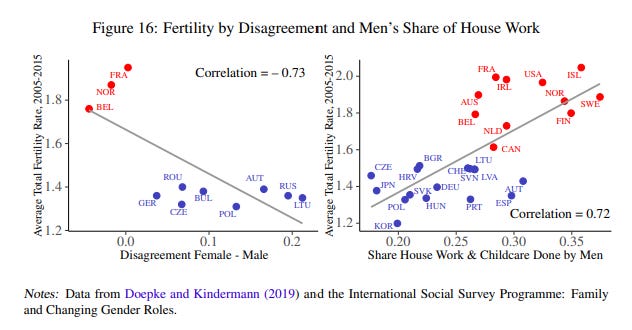Finance is a funny business. Generally speaking people will praise innovative and original thinking, but the real trick is to be about 6 months earlier than everyone else. Any earlier, and you are wrong for too long, and if you are too late, then you are just part of the crowd. So it was with great pleasure I read an Economist article questioning received wisdom on fertility rates (September 15, “Richer societies mean fewer babies. Right?”). The main point of the article was that the relationship between income and fertility was changing. The Economist article quoted two articles. I have gone to the source data and provide the best bits below.
One publication it quotes from is “Why did rich families increase their fertility? Inequality and marketization of child care” by Michael Bar, Moshe Hazan, Oksana Leukhina, David Weiss and Hosny Zoabi
The key charts from the publication are below. In essence it shows that in 1980 there was a strong relationship between income and fertility rates. This is something that also occurs on an international scale, with richer countries also have lower fertility rates than poorer countries. The argument is that higher levels of education, and higher levels of female participation in the workforce leads to women have less babies. But what the chart shows below is that by 2010, that relationship was already changing in the US (for white, non-hispanic married women at least)
To further prove the point, the relationship between education and fertility rates were also changing in the US.
Matthew Doepke with other authors published a thorough review of the data in his recent publication “ The Economics of Fertility: A New Era”. Again, I show the key charts (in my view). One interesting chart was showing that World War II drove a big increase in female earnings and participation, which then reversed during the baby boom period.
And the baby boom was a response to lost population during World War II - as counties that remained neutral during the war saw no increase in fertility after the War.
The key issue, which the above charts on the baby boom show is that fertility rates is a directly driven by policy. After World War II, women were forced out of the workplace to make room for returning soldiers, and governments had very pro-natal policies. As these policies were relaxed, women have entered the workforce and have chosen to start families at a later date, leaving less time to have children.
So one option is to revert to post War policies of forcing women out of the workforce - but that would unquestionably be a bad policy. The other option is that society as a whole works together to boost fertility rates. We can see that societies where men do more house work, tend to have higher fertility rates.
So what does this mean? I think the Economist are wrong to think that the relationship of income to fertility is changing. This implies as societies get richer, then they will become more fertile. What I think it is picking up is that wealthy women can afford the childcare, and the IVF that all women need to boost fertility rates. If governments decide to act on the “fertility crisis” then the policy actions are obvious - universal child care and universal IVF.










REPRODUCTION REVOLUTION - PART II